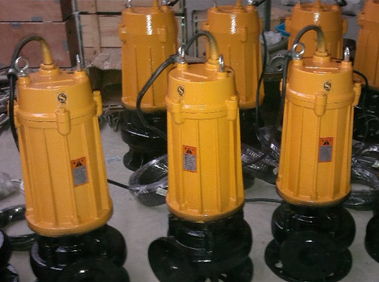Starting method of submersible electric pump
There are various starting methods for submersible electric pumps, mainly including the following:
1. Direct starting
Features: Direct starting is the simplest and most direct starting method. It has the characteristics of large starting current, large starting torque and short starting time.
Applicable scenarios: It is suitable for situations where the grid capacity is large enough and there is no strict requirement for the starting torque of the motor. For small-power submersible motors and submersible pumps, direct starting is often used because their starting current is not large and the impact on the grid is small.
Precautions: Since the starting current of direct starting is large, it may cause a certain impact on the grid, so it needs to be selected carefully in practical applications.
2. Reduced voltage starting
Features: Reduced voltage starting is a method of reducing the starting current by reducing the starting voltage of the submersible pump motor. There are many ways, such as star-delta starting (Y-Δ starting), autotransformer reduced voltage starting, etc.
Applicable scenarios: It is suitable for occasions with small grid capacity or certain requirements for the starting torque of the motor. Star-delta starting reduces the starting voltage of the motor to 1/√3 of the rated voltage by changing the connection mode of the motor stator winding, thereby reducing the starting current. Autotransformer step-down starting uses an autotransformer to reduce the starting voltage of the motor to achieve the purpose of reducing the starting current.
Advantages: It can significantly reduce the starting current and reduce the impact on the power grid.
3. Soft start
Features: Soft start is a technology that controls the input voltage or current of the submersible pump motor to gradually increase it to the rated voltage or rated current according to a preset curve, thereby achieving smooth starting. It has the characteristics of small starting current, stable starting torque, and long starting time.
Applicable scenarios: It is suitable for occasions with strict requirements on starting current and starting torque, such as high-precision control, heavy-load starting, etc.
Advantages: Since the current and torque of the motor gradually increase during the soft start process, it can reduce the impact on the power grid and extend the service life of the motor.
4. Variable frequency starting
Features: Variable frequency starting is a technology that controls the power frequency of the submersible pump motor through the frequency converter, thereby changing the speed and torque of the motor to achieve smooth starting and speed regulation. It has the characteristics of small starting current, adjustable starting torque, wide speed regulation range, and significant energy saving effect.
Applicable scenarios: Suitable for occasions with strict requirements on parameters such as flow and pressure, such as water supply systems, air conditioning systems, etc.
Advantages: The frequency converter can adjust the speed and torque of the motor according to actual needs, achieve precise flow control and pressure control, and improve the operating efficiency of the submersible pump.

5. Auto-coupling pressure reduction starting
Features: Auto-coupling pressure reduction starting is a method that uses an autotransformer to reduce the starting voltage of the submersible pump motor to a certain proportion of the rated voltage, thereby reducing the starting current. It has the characteristics of small starting current, adjustable starting torque, simple equipment, and easy operation.
Applicable scenarios: Suitable for occasions with small grid capacity or certain requirements for motor starting torque.




